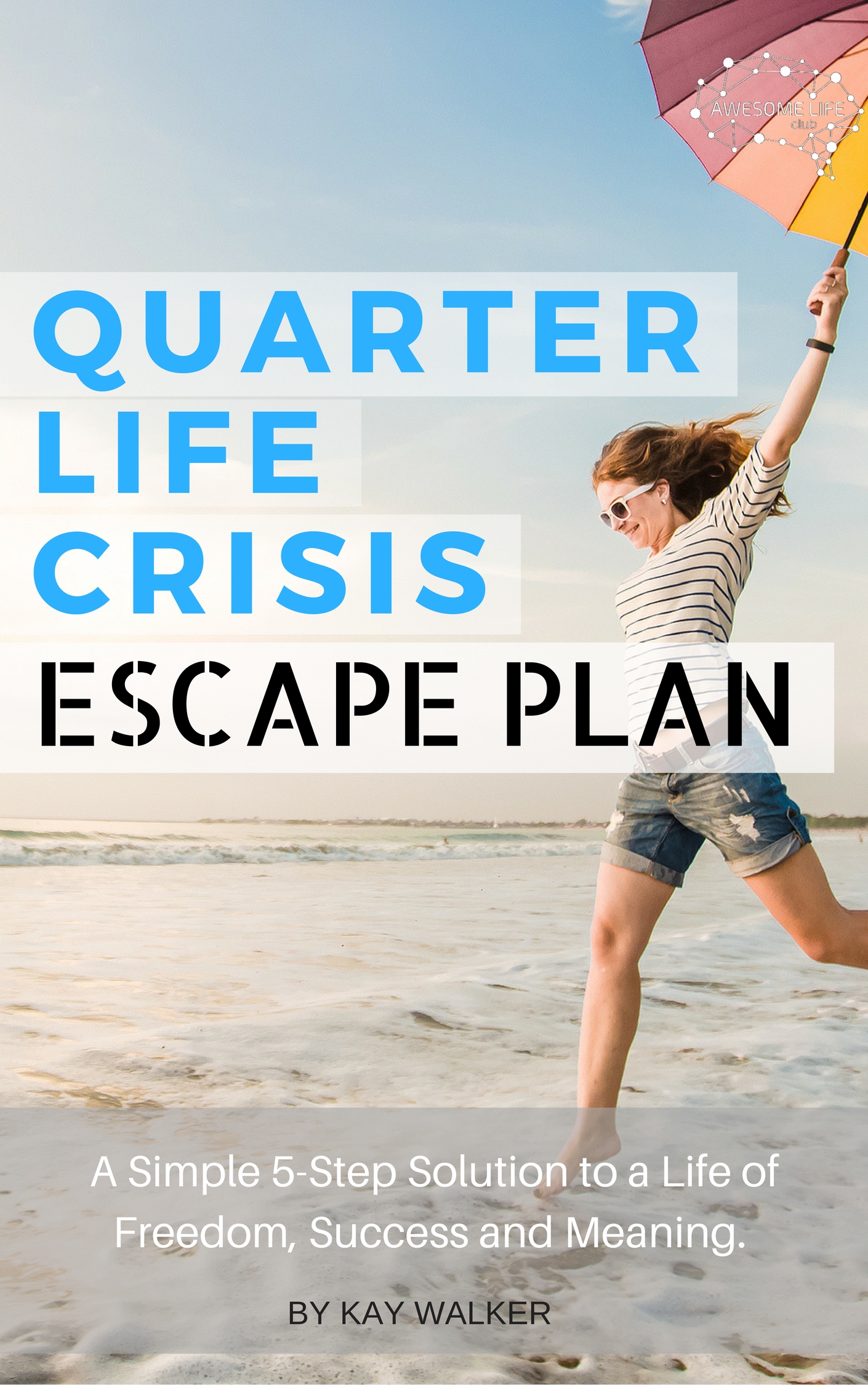Okay, so you’re at a point in your life where you’re feeling lost. And, you are stuck and don’t know how to find yourself again. Feeling lost sucks because it is emotionally excruciating. But, there is some really good news about finding yourself in Nowheresville. First of all, it’s totally normal. So take a moment now to breathe a sigh of relief.
The even better news is feeling lost is useful. This is because feeling lost usually comes before feeling found. Before becoming a new you. Before learning something profound and moving into a new (and usually much better) stage of your life. It’s part of the evolution of you living your best life.
You can’t avoid feeling lost. It will happen to you at least once and probably many times over the course of your life. It’s inevitable. Though, feeling lost is less painful when you know how to handle it. So read on to learn what a feeling lost crisis is about, and how to free yourself. Read on to learn how to find yourself again.
Feeling lost? Here’s why…
When you feel lost in life the first thing you’ll do is ask yourself: Why do I feel lost? People desperately need to know WHY. It’s part of the machinery of being human. We’re inquisitive. And we become especially so when we find ourselves in a negative emotional funk. This is because we are desperate to get out of it. We think if we can figure out WHY then we can easily solve our problem of feeling lost.
Below are some of the varied theories on the experience of feeling lost. The the more concrete neuroscience explanation follows. However, these reasons may help you think a bit more objectively about your current situation so you can gain some quick relief.
Popular theories on feeling lost that may make you feel better
You’re getting closer to becoming your authentic self and having what you really want in life
Many spiritual leaders call periods of feeling lost the “the dark night of the soul”. It happens when you are thwarted in achieving what you want and you don’t know what to do next. You are in a space of shedding the you you were. You’re heading towards a new phase of life. So you’re in a dark place. You’re in an in-between phase. Inevitably it will pass. The “dark night of the soul” theory suggests the only thing to do is wait the period out and it will pass. The negative feelings are like a purging you have to go through. But it’s good as it will have you become a stronger deeper person and the next evolution of you will unfold.
You’re on the verge of a breakthrough!
A more progressive life performance coach approach to feeling lost would say that it’s just “the breakdown before the breakthrough”. You have to get what doesn’t work before you get what does. Feeling lost is part of the process of feeling found. When you feel lost you’re in a breakdown mode. This will inevitably lead to a breakthrough. So feeling lost is good news because you’re on the brink of clarity!
It’s part of the natural ebb and flow of life
A Buddhist would say feeling lost is totally normal and part of the natural ebb and flow in life. Buddhists talk about impermanence. Life naturally goes through ups and downs. And once again the down comes before the up. You have to feel lost before learning how to find yourself again!
For the 20 somethings and 30 somethings reading this….
Feeling lost can happen at any stage of life however people experience more feeling lost during the 20s and 30s. This is because you’re at a point in life where you’re defining who you are. There’s even a name for it: The quarter life crisis.
The psychology behind feeling lost and why it feels so terrible
If I interviewed a group of people that were all experiencing a sense of “feeling lost” the reasons I’d get back would be varied. The reasons could range from: “I don’t know what to do with my career” to “I can’t figure out what my purpose in life is” or “my partner left me and I can’t find anyone to share my life with”.
Feeling lost is a subjective experience. People use different words to describe it. Depending on your external circumstances and your stage of life your reason will be different than your neighbor down the street.
But beneath the layers of reasons anyone gives there are only two possible core issues at play. Think of your reasons as branches on a tree with a bigger, deeper issue at the root.
Feeling lost – Root of the problem #1: You have a vision you have for your life but you have no damn clue how to achieve it
Quite often feeling lost happens when you’ve tried to get what you want for a long time and been thwarter. You may have even gotten quite creative about finding new ways to have what you want and failed. When life doesn’t go the way you plan (and if it’s been many times) you go into a space of, “Shit. What now?”. You then start to question everything.
If you’re feeling lost right now you may easily be able to tell me what it is, deep down, that you really want. You have a big dream but you have no clue what to do to get it so your next actions to take are muddy. You are paralyzed because you simply have no idea what to do to get to where you want to be.
When you don’t know how to get what you want you then start to question if you even want it! You start to consider new options for your life. You start to consider taking totally new pathways. This can leave you feeling even more confused. Even more in the dark. Even more stuck unable to feel confident about taking any new actions and to move forward.
Feeling lost – Root of the problem #2: You haven’t decided what you want your future to look like
When you look into the future and ask yourself what you want, if your answer is: “I don’t know” then you’re lost because you haven’t decided what you want and therefore are not taking action and not moving forward. This often happens when your circumstances change suddenly or without your desire for them to change. For instance, being fired from a job or breaking up with a long-term partner.
Remember this: The future your heading towards is always dictating how you feel in the now and the actions you will take now.
So, if you haven’t decided where you’re going, you won’t be going anywhere. Once again, you’re paralyzed. It’s like having a treasure map with no X marks the spot on it. If you have nowhere to get to then you have no reason to do anything.
When you’re not clear about what you want to achieve and do next in your life you’ll feel horrendous, because you’re paralyzed around your next actions. You simply don’t know what to do. When o are in this state you can’t possibly find yourself again.
The truth about both versions of feeling lost
Happiness is linked to progress. When you’re progressing – taking action towards what you want – you will feel good. When you’re stuck in a place of “I don’t know what to do next” you’ll feel bad.
So, when you are in a space in life where you aren’t sure what to do next you’re in limbo. You’re stuck in an in between place of what you were doing and had wanted and you haven’t decided what’s next.
How to put an end to feeling lost and find yourself again
The most basic pathway out of both modes of feeling lost is to DECIDE what to do and then go DO it. That sounds easier than it is. Because often your unclear or afraid of the unknown and it messes with your ability to decide. You’ll likely find yourself to external support systems for guidance. Wisdom from people in your life (or on the web) can help you but no one can decide for you.
In order to decide you’ll need to go internal. You’ll need to consult with yourself and ask yourself some deep questions. You’ll need to consider what you’d like your future to look like and how to get there from where you are. Then, you’ll need to decide on some safe actions you can take now that won’t ruin what you have built.
For the 4 steps that will free you fast, read What am I doing with my life? 4 Steps to clarity








 Let me explain what I mean, again using a hotdog, as an example, so I can illustrate how this works.
Let me explain what I mean, again using a hotdog, as an example, so I can illustrate how this works.

